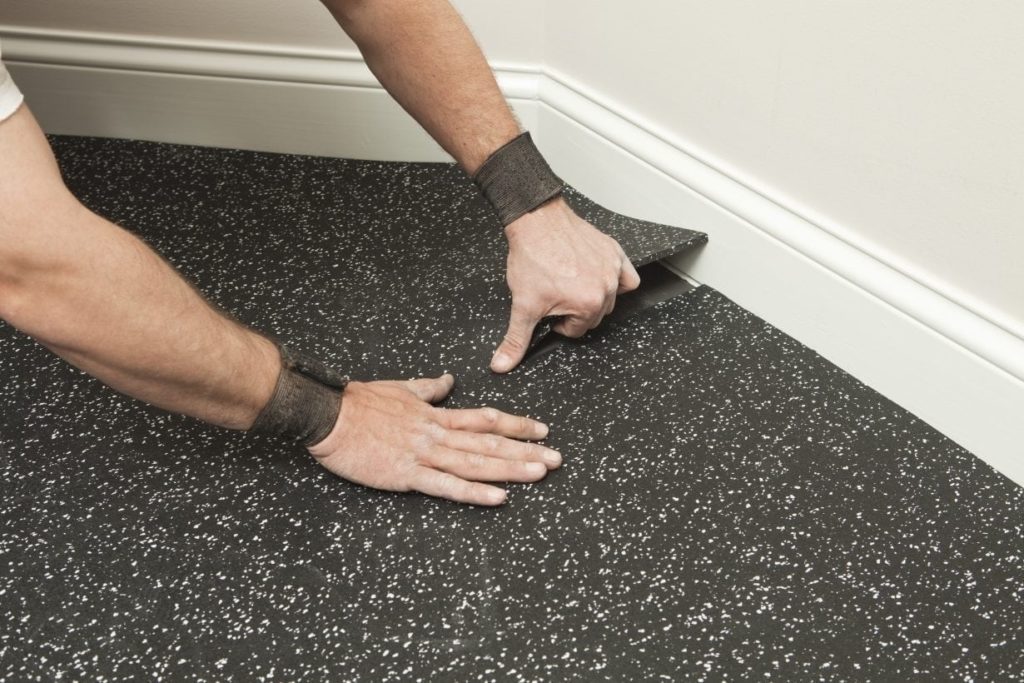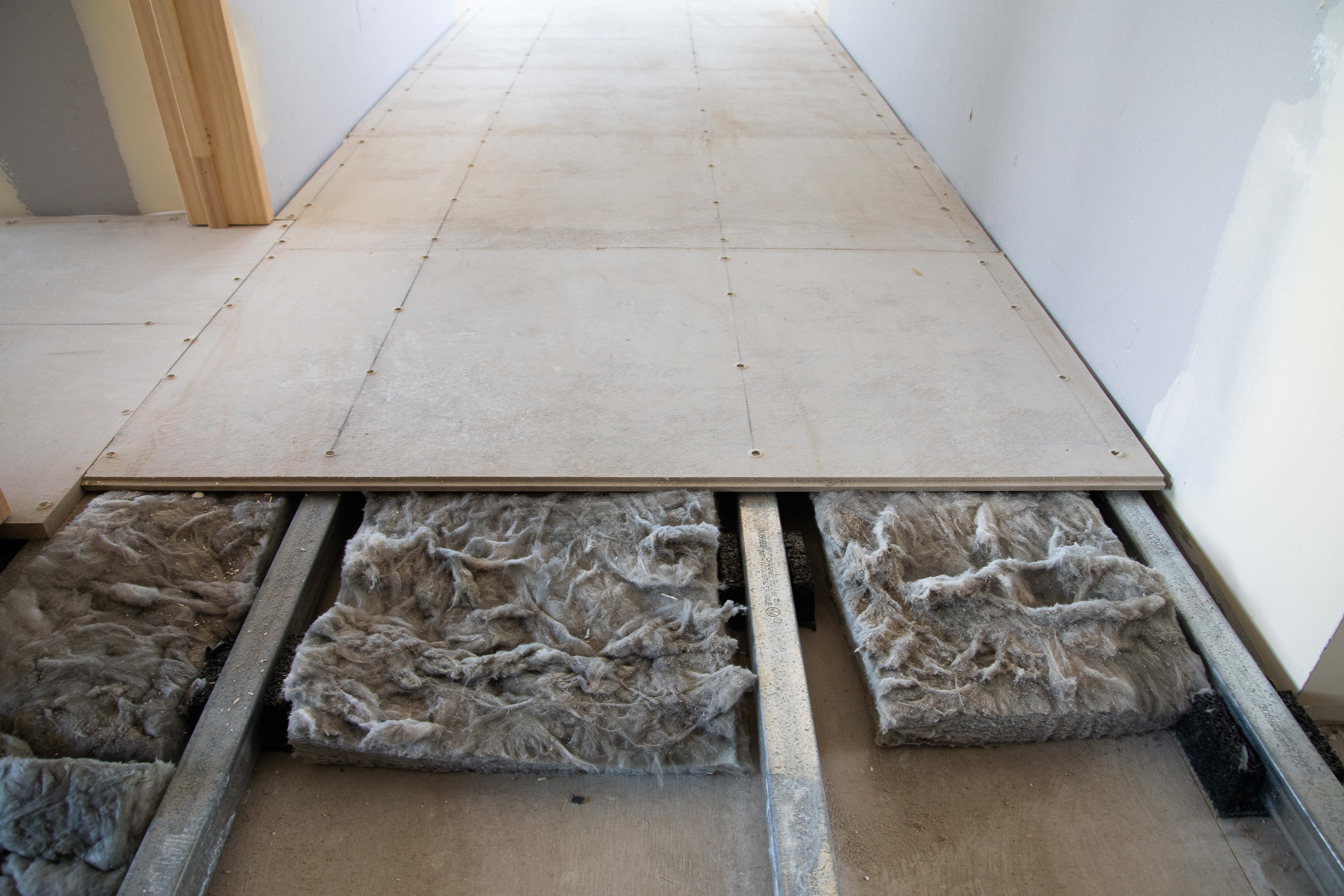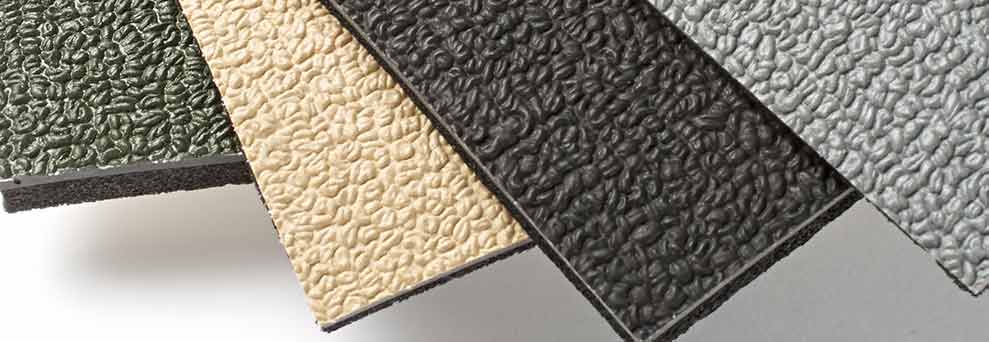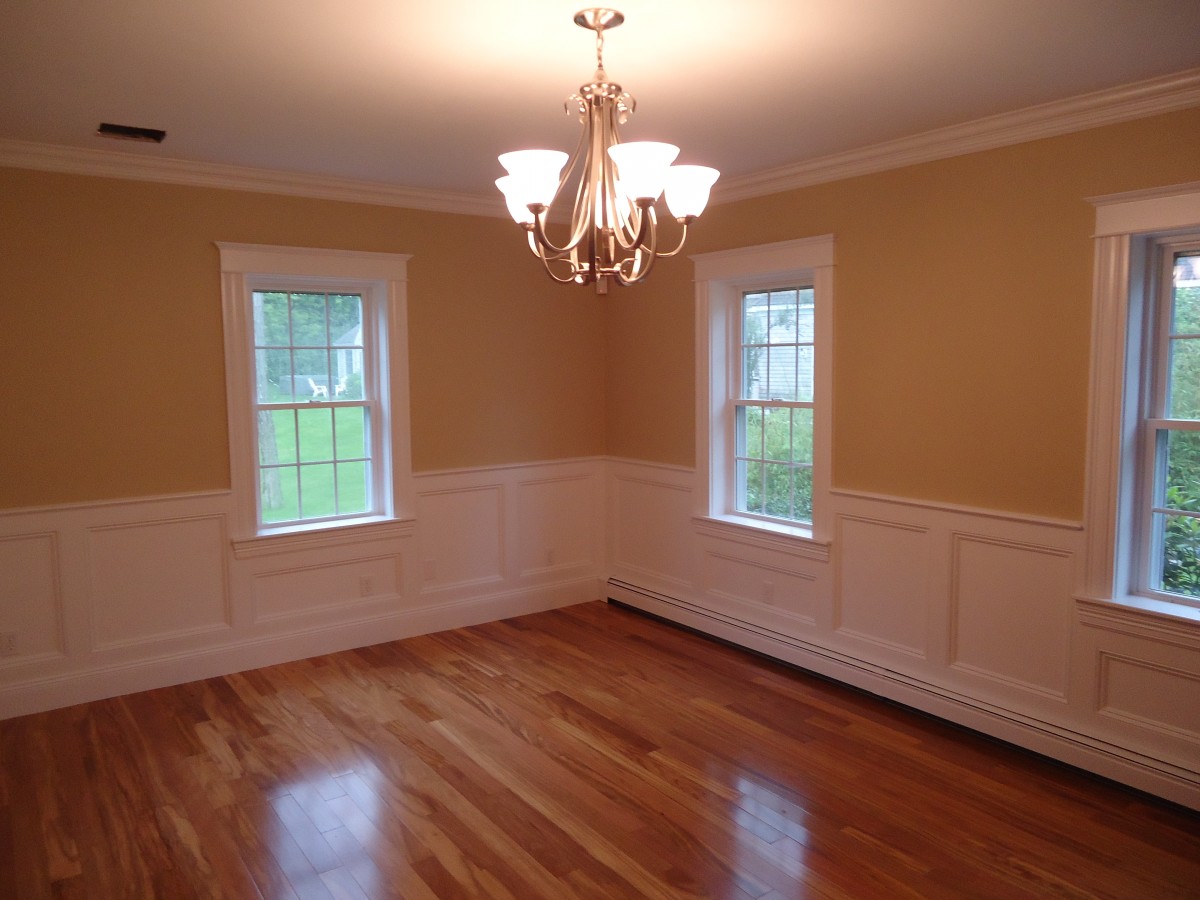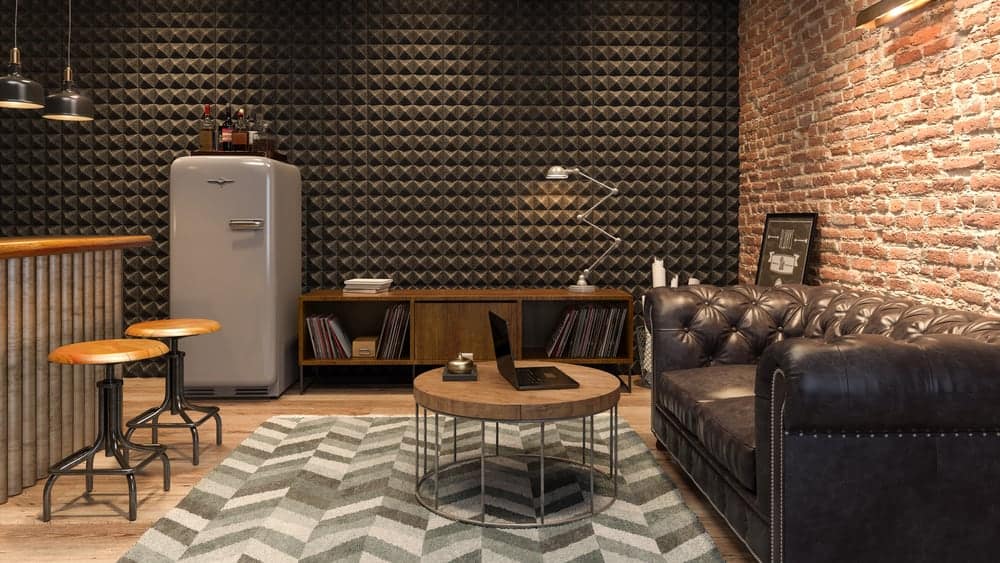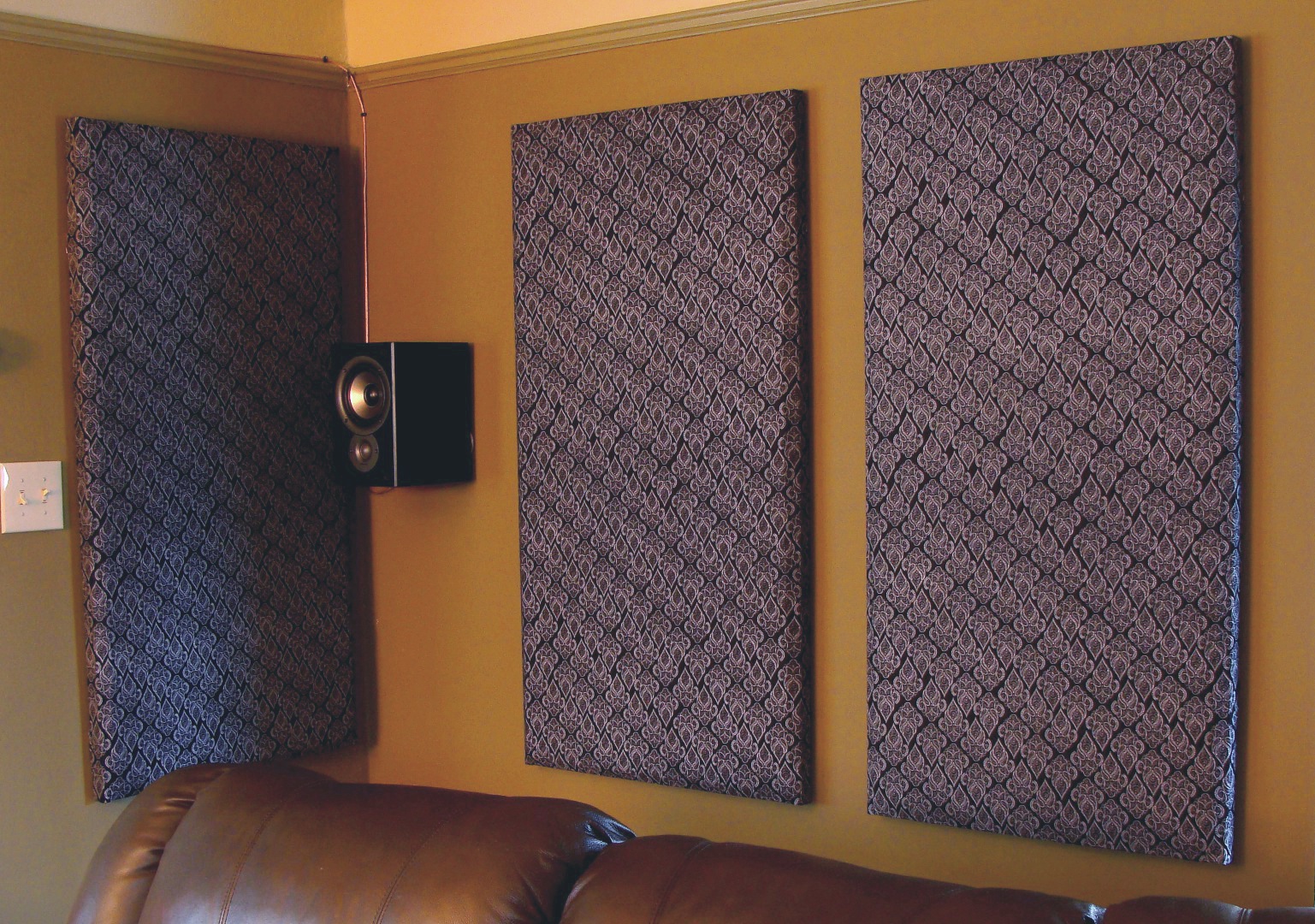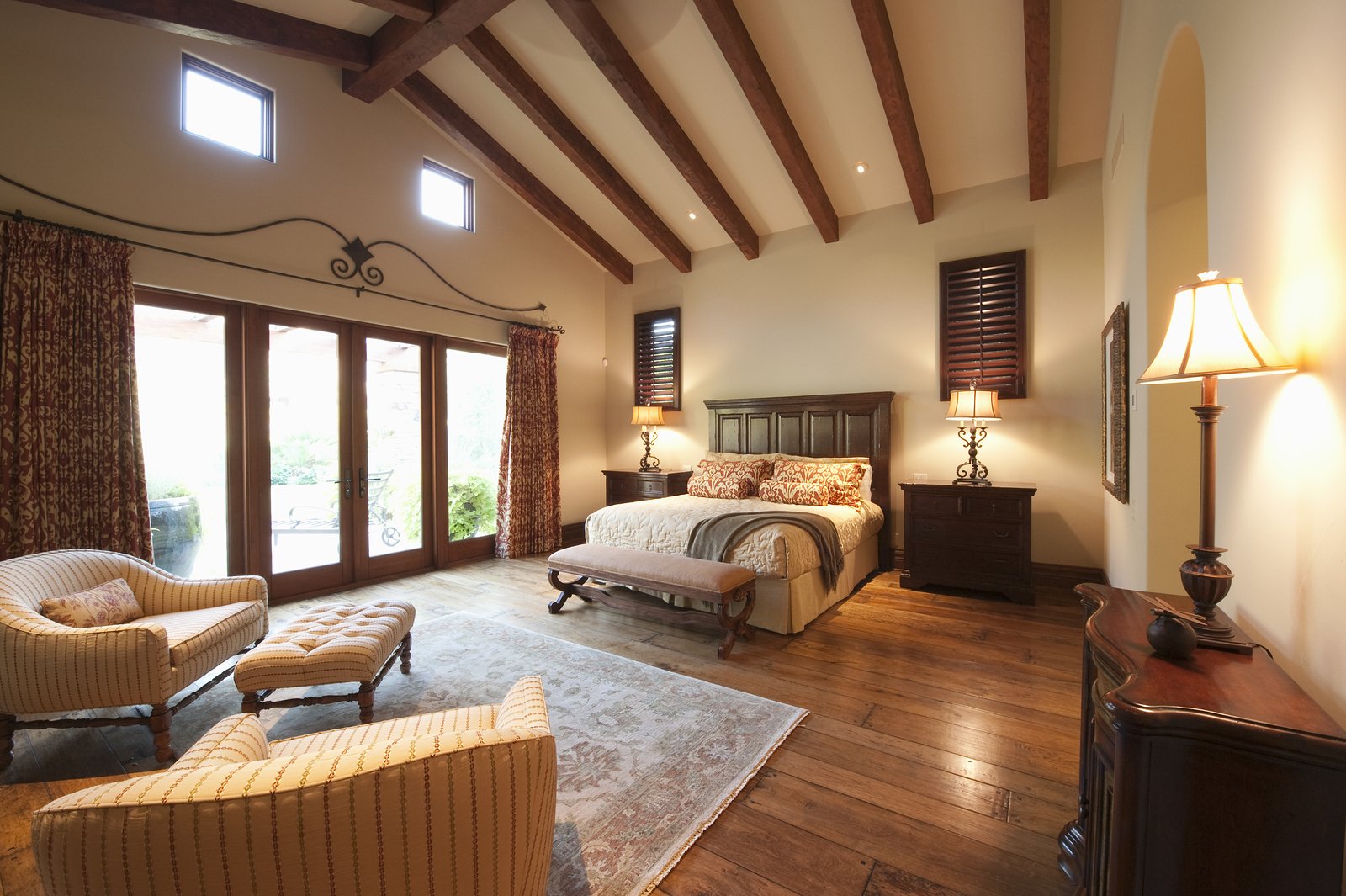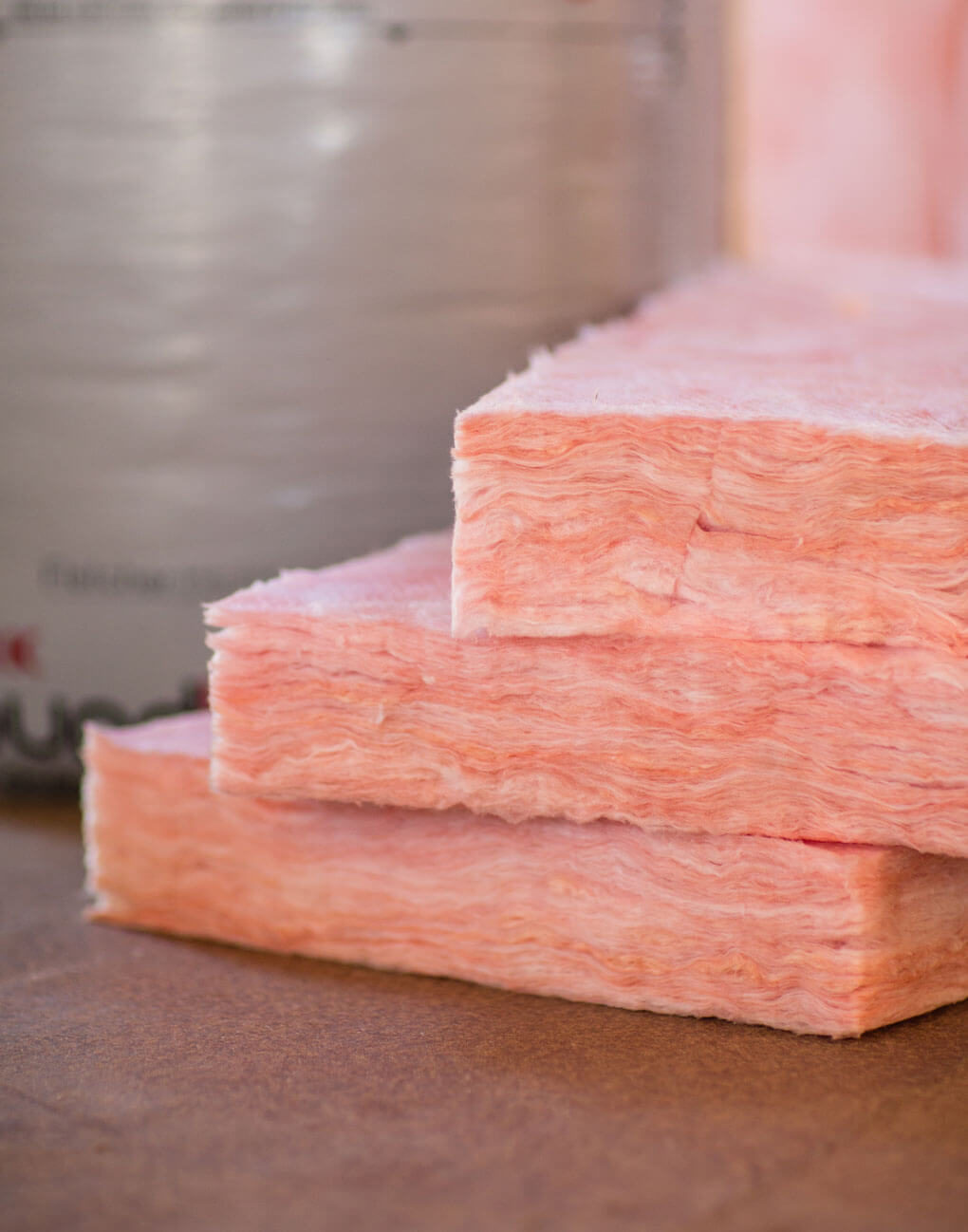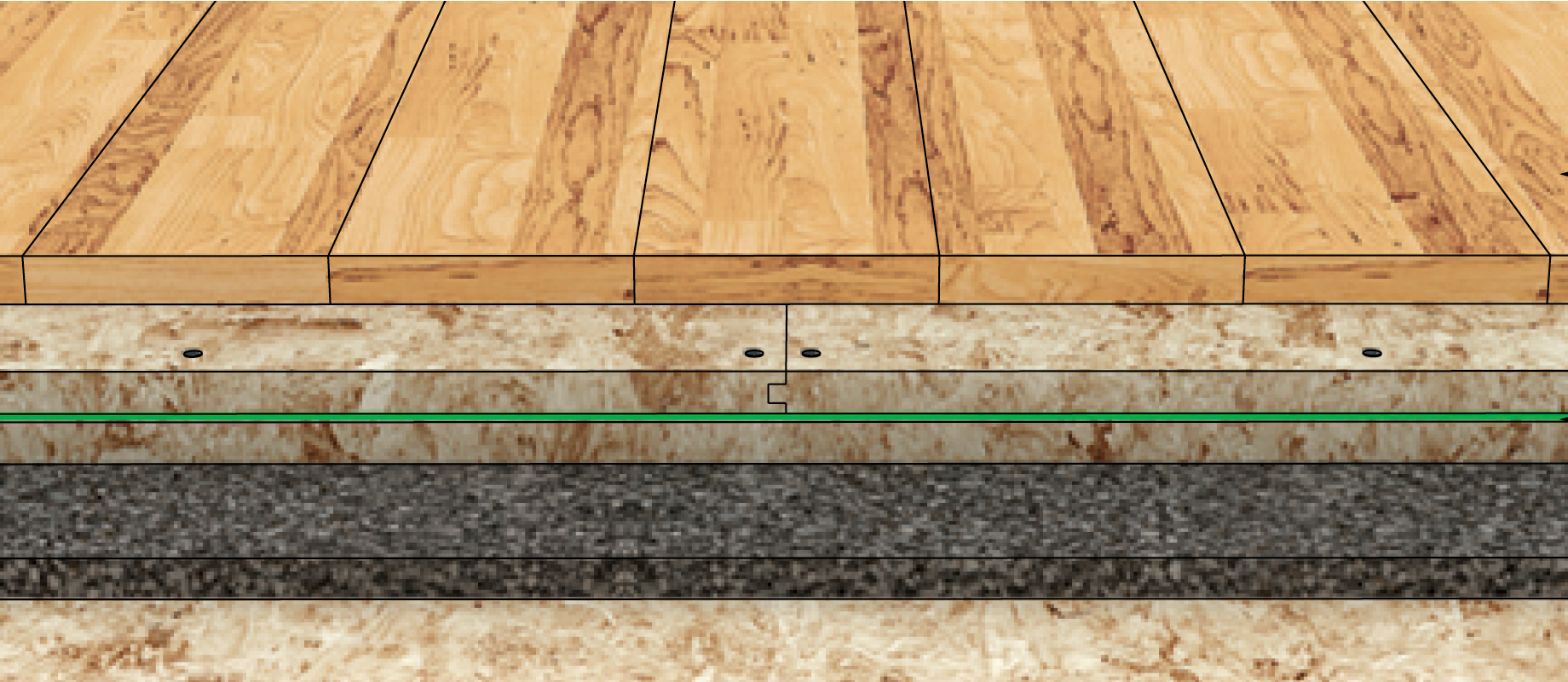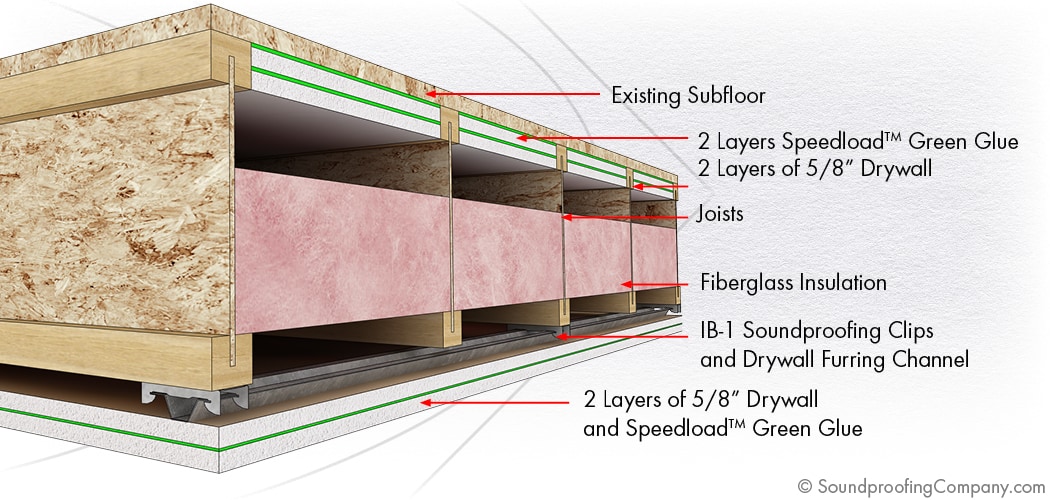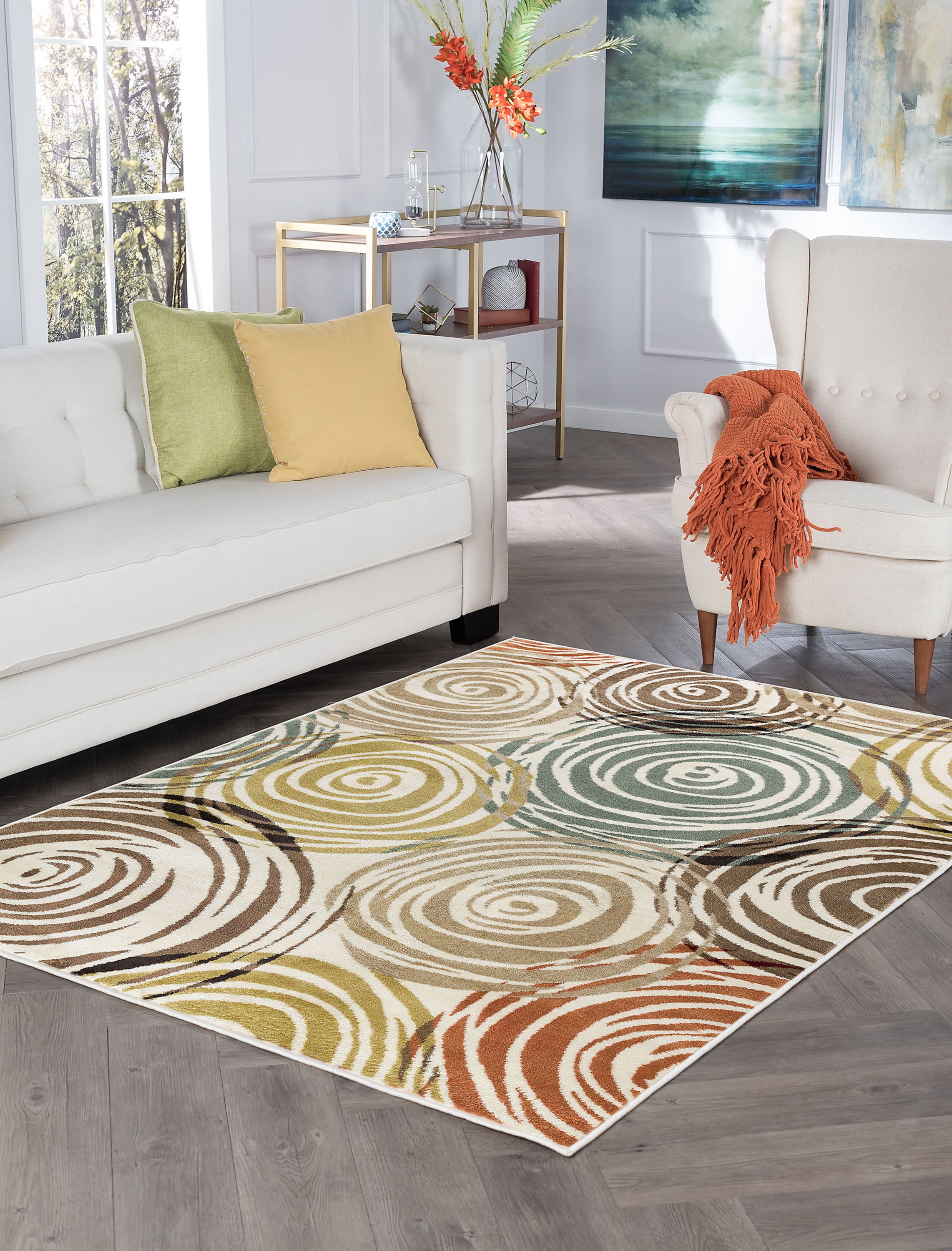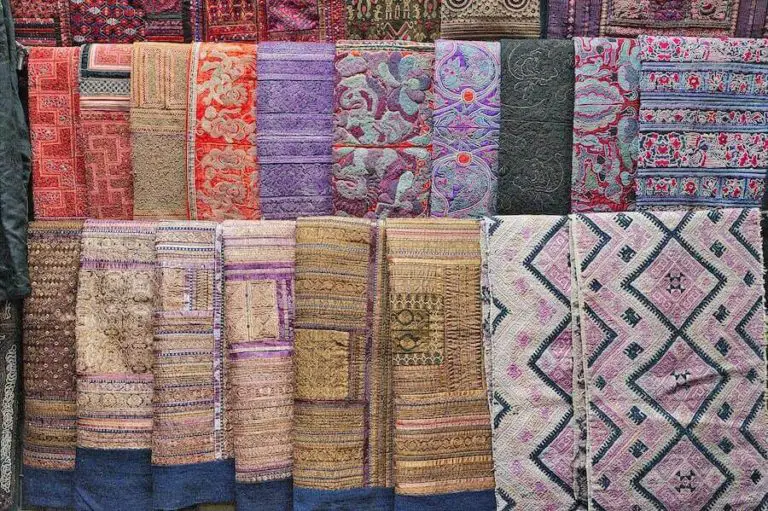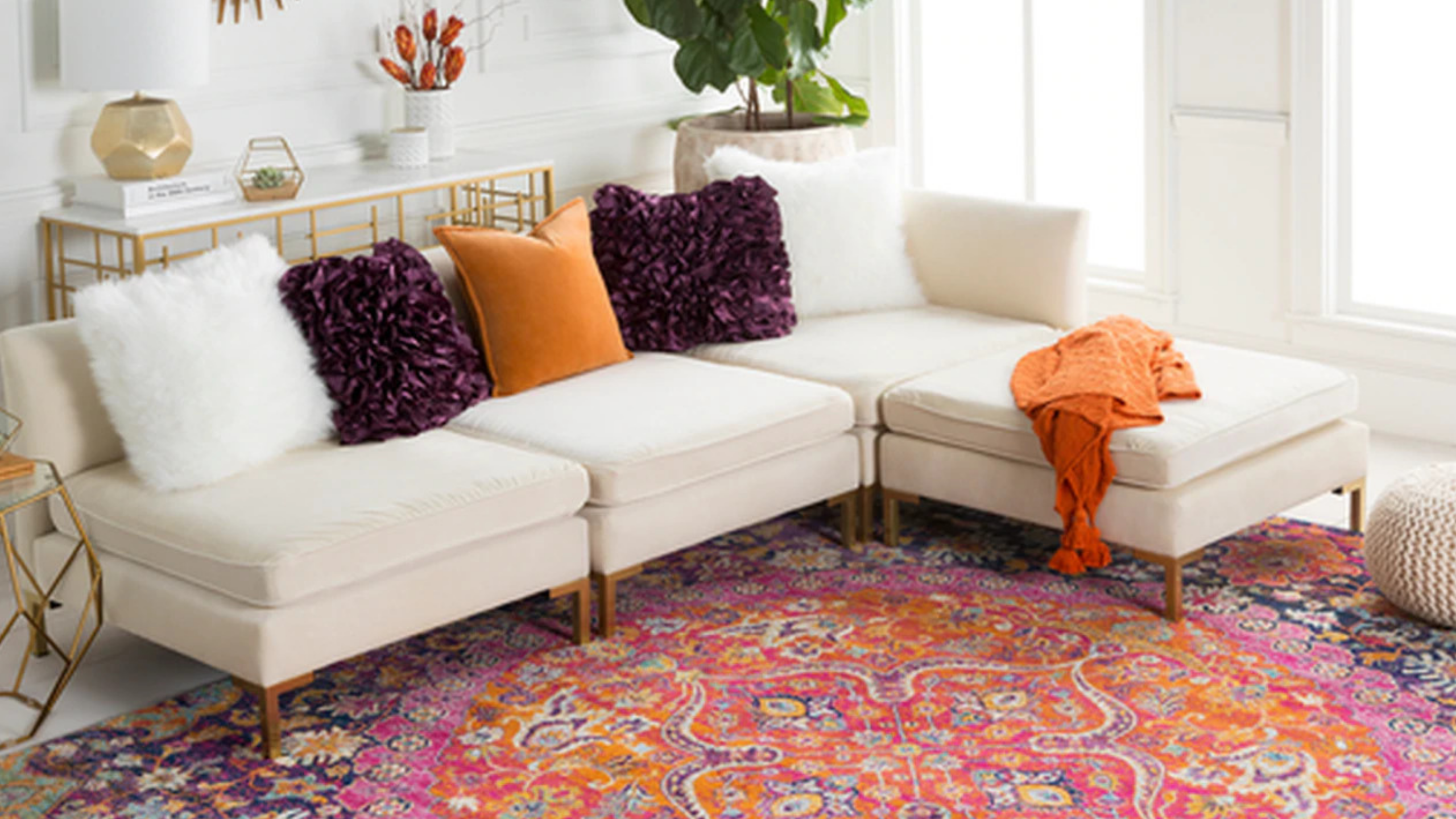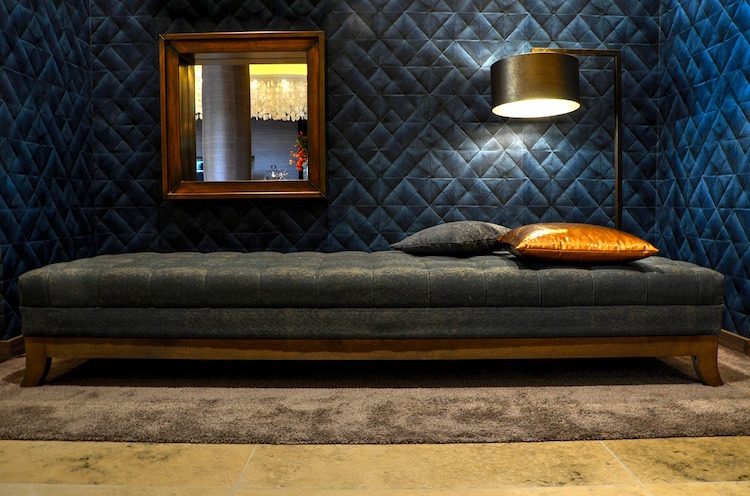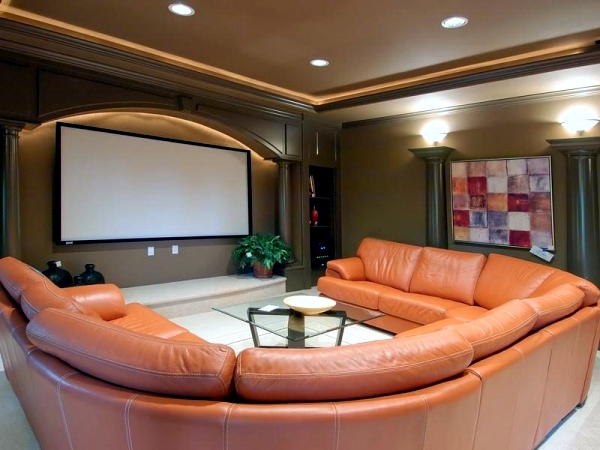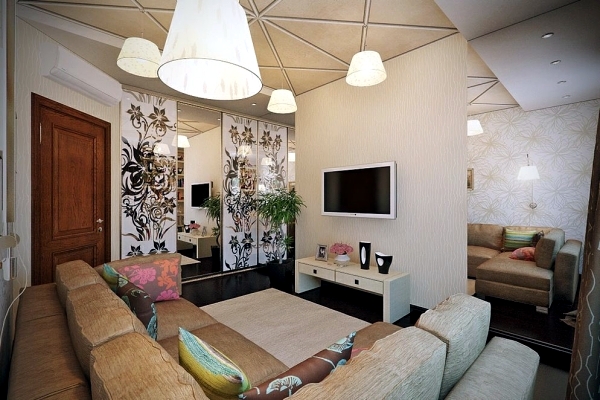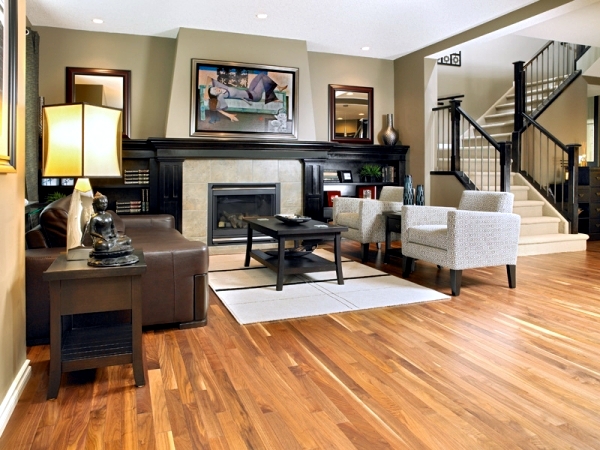If you're tired of hearing your neighbor's footsteps or the loud TV from the room above, you may be in need of soundproofing mats for your living room floor. These mats are designed to absorb and reduce noise, making your living space more peaceful and quiet. But with so many options on the market, how do you choose the right one for your home? One of the top options for living room soundproofing is carpet underlay. This is a thick, dense material that is placed between your existing floor and the carpet. It not only provides a soft and comfortable surface to walk on, but it also helps to absorb sound and reduce noise transfer between floors. Cork underlay is another popular choice for living room soundproofing. It is made from natural cork and has excellent sound-absorbing properties. It is also environmentally friendly and can add insulation to your floors, making your living room more energy-efficient.Soundproofing Mats for Living Room Floors
For those looking for a more heavy-duty soundproofing solution, acoustic floor mats may be the way to go. These mats are specifically designed to block sound from entering or leaving a room, making them perfect for living rooms that are frequently used for entertainment or relaxation. One popular type of acoustic floor mat is made from recycled rubber. This material is not only eco-friendly, but it also has excellent sound-absorbing qualities. It is also durable and can withstand heavy foot traffic, making it a great option for high-traffic living rooms. Foam acoustic mats are another great choice for living room soundproofing. They are lightweight and easy to install, making them a popular DIY option. Foam mats also come in a variety of thicknesses and densities, allowing you to choose the level of soundproofing that best fits your needs.Acoustic Floor Mats for Living Rooms
Aside from mats, there are other soundproofing solutions that can be used in your living room to reduce noise. One effective option is to add soundproof curtains to your windows. These curtains are made from thick, heavy material that can block outside noise from entering your home. Another simple solution is to add soundproofing panels to your walls. These panels are designed to absorb sound and reduce echo in a room. They come in various sizes and can be easily installed on any wall in your living room. If you have a hard floor in your living room, adding area rugs can also help to absorb sound and reduce noise. Opt for a thick, plush rug for maximum soundproofing results.Living Room Soundproofing Solutions
Living rooms are often the hub of activity in a home, making them a prime location for noise. If you are looking to reduce noise in your living room, consider investing in noise reducing mats. These mats are designed to absorb sound and reduce noise transfer between floors and rooms. Rubberized mats are a popular choice for noise reduction. They are made from a combination of rubber and foam and are designed to be placed under your existing flooring. These mats are not only great for reducing noise, but they can also add insulation to your living room. Another option is soundproofing foam mats. These mats are made from high-density foam and can be placed under flooring or on top of existing carpet. They are also a great choice for reducing noise in home theaters or music rooms.Noise Reducing Mats for Living Rooms
The key to effective soundproofing is sound absorption. That's why it's essential to choose sound-absorbing mats for your living room. These mats are designed to absorb sound and reduce the amount of noise that travels through your floors and walls. Cork mats are a popular choice for sound absorption. They are made from natural cork and have excellent sound-absorbing properties. They are also durable and can withstand heavy foot traffic, making them a great option for living rooms. Another great option is acoustic foam mats. These mats are made from high-density foam and are designed to absorb sound waves, reducing echo and noise in a room. They are also lightweight and easy to install, making them a popular DIY choice for living room soundproofing.Living Room Sound Absorbing Mats
If you have hard flooring in your living room, adding a soundproofing underlayment can make a significant difference in reducing noise. Underlayment is a thin layer of material that is placed between your existing floor and the new flooring. Cork underlayment is a popular choice for soundproofing underlayment. It is made from natural cork and has excellent sound-absorbing properties. It also acts as an insulator, making your living room more energy-efficient. You can also opt for rubber underlayment for soundproofing your living room floors. It is made from recycled rubber and is an excellent option for reducing noise from impact, such as footsteps or furniture being moved.Soundproofing Underlayment for Living Room Floors
When it comes to soundproofing your living room, there are various materials that can be used to achieve the desired results. The most effective materials for living room floor soundproofing are those that are dense, heavy, and have sound-absorbing properties. Rubber is one of the top materials for living room floor soundproofing. It is dense and heavy, making it an excellent choice for blocking sound. It also has sound-absorbing properties, making it a popular choice for living room soundproofing mats and underlayment. Cork is another great material for living room floor soundproofing. It is lightweight, eco-friendly, and has excellent sound-absorbing properties. It is also a durable material that can withstand heavy foot traffic, making it a great option for living rooms.Living Room Floor Soundproofing Materials
Adding rugs to your living room can not only add warmth and style but can also help to soundproof the space. Soundproofing rugs are designed to absorb sound and reduce noise in a room, making them a great addition to any living space. Thick, plush rugs are the best option for soundproofing your living room. They will absorb sound and reduce noise transfer between floors and rooms. Opt for rugs made from materials like wool, which have excellent sound-absorbing properties. You can also opt for noise-reducing rugs that are specifically designed for soundproofing. These rugs are made from materials like rubber or foam and are designed to absorb sound and reduce noise in a room.Soundproofing Rugs for Living Rooms
When it comes to living room soundproofing, there are a few tips to keep in mind to achieve maximum results. 1. Choose sound-absorbing materials: When selecting soundproofing mats, underlayment, or rugs for your living room, opt for materials that have sound-absorbing properties, such as cork or rubber. 2. Layer your soundproofing: To achieve maximum soundproofing, consider layering different materials, such as a rubber mat topped with a foam mat, under your flooring or rug. 3. Cover windows and walls: Don't forget to cover windows and walls with sound-absorbing materials such as curtains or panels to reduce noise transfer. 4. Use thick, plush materials: When choosing rugs or mats for your living room, opt for thick, plush materials that will absorb sound and reduce noise.Living Room Soundproofing Tips
Soundproofing your living room doesn't have to be a complicated and expensive process. With the right materials and a little DIY know-how, you can effectively soundproof your living space using mats. Start by measuring your living room and determining how much soundproofing material you will need. Then, follow the manufacturer's instructions for installing the mats or underlayment. Finally, layer on area rugs or soundproofing panels for additional noise reduction. By choosing the right materials and following these tips, you can effectively soundproof your living room and create a peaceful and quiet space for relaxation and entertainment. So say goodbye to noisy neighbors and hello to a more peaceful living space with soundproofing mats for your living room floors.DIY Living Room Soundproofing with Mats
Enhance Your Home's Acoustics with a Living Room Mat Soundproof Solution

Incorporating Style and Functionality into Your House Design
 When it comes to designing your home, there are many important factors to consider. You want a space that is not only visually appealing, but also functional and comfortable. One often overlooked aspect of house design is the acoustics of a room. The sound quality in a room can greatly affect the overall ambiance and enjoyment of the space. That's where a
living room mat soundproof
solution comes in.
When it comes to designing your home, there are many important factors to consider. You want a space that is not only visually appealing, but also functional and comfortable. One often overlooked aspect of house design is the acoustics of a room. The sound quality in a room can greatly affect the overall ambiance and enjoyment of the space. That's where a
living room mat soundproof
solution comes in.
The Importance of Proper Acoustics in Your Living Room
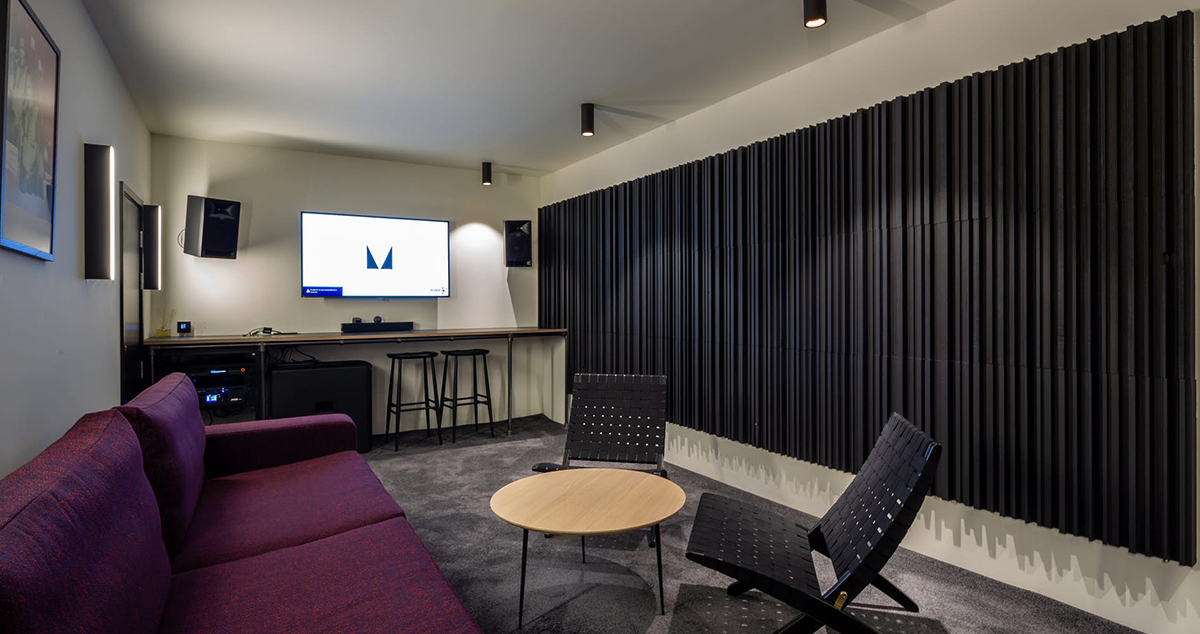 Your living room is where you and your family spend a significant amount of time, whether it's relaxing, watching TV, or hosting guests. It's important to have a space that not only looks great, but also sounds great. Poor acoustics can lead to echoing, muffled sound, and an overall unpleasant experience in the room. This is especially true if you have hardwood or tiled floors, which can amplify sound. That's where a
living room mat soundproof
solution can make all the difference.
Your living room is where you and your family spend a significant amount of time, whether it's relaxing, watching TV, or hosting guests. It's important to have a space that not only looks great, but also sounds great. Poor acoustics can lead to echoing, muffled sound, and an overall unpleasant experience in the room. This is especially true if you have hardwood or tiled floors, which can amplify sound. That's where a
living room mat soundproof
solution can make all the difference.
The Solution: Living Room Mat Soundproof
 A living room mat soundproof solution is an easy and effective way to enhance the acoustics of your living room. These mats are specially designed to absorb sound and reduce noise levels in a room. They are typically made of materials such as rubber, cork, or foam, which are known for their soundproofing abilities. Not only do they improve the sound quality in your living room, but they also add an extra layer of cushioning and comfort underfoot.
A living room mat soundproof solution is an easy and effective way to enhance the acoustics of your living room. These mats are specially designed to absorb sound and reduce noise levels in a room. They are typically made of materials such as rubber, cork, or foam, which are known for their soundproofing abilities. Not only do they improve the sound quality in your living room, but they also add an extra layer of cushioning and comfort underfoot.
Style and Versatility
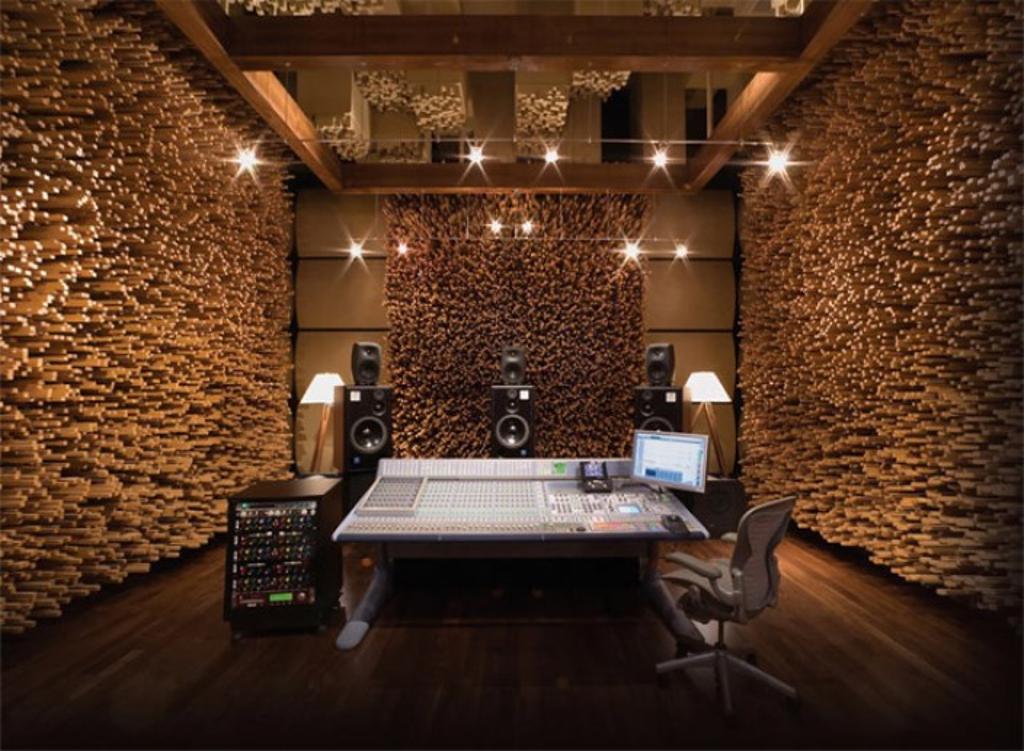 One of the best things about a living room mat soundproof solution is that it seamlessly integrates into your house design. These mats come in a variety of styles, colors, and patterns, so you can choose one that complements your existing decor. They can also be used in different areas of your living room, such as under furniture or in high traffic areas. This versatility allows you to customize the soundproofing to your specific needs and preferences.
One of the best things about a living room mat soundproof solution is that it seamlessly integrates into your house design. These mats come in a variety of styles, colors, and patterns, so you can choose one that complements your existing decor. They can also be used in different areas of your living room, such as under furniture or in high traffic areas. This versatility allows you to customize the soundproofing to your specific needs and preferences.
Easy to Install and Maintain
 Another great aspect of a living room mat soundproof solution is that it is easy to install and maintain. Most mats come with a self-adhesive backing, making installation a breeze. They are also easy to clean and maintain, simply requiring regular vacuuming or spot cleaning. This makes them a practical and convenient addition to any house design.
Another great aspect of a living room mat soundproof solution is that it is easy to install and maintain. Most mats come with a self-adhesive backing, making installation a breeze. They are also easy to clean and maintain, simply requiring regular vacuuming or spot cleaning. This makes them a practical and convenient addition to any house design.
Conclusion
 Incorporating a living room mat soundproof solution into your house design is a simple and effective way to improve the acoustics of your living room. It not only enhances the sound quality in the room, but also adds style, versatility, and ease of maintenance. So why settle for subpar acoustics in your living room when you can easily upgrade with a living room mat soundproof solution? Take the first step towards a more enjoyable and functional living space today.
Incorporating a living room mat soundproof solution into your house design is a simple and effective way to improve the acoustics of your living room. It not only enhances the sound quality in the room, but also adds style, versatility, and ease of maintenance. So why settle for subpar acoustics in your living room when you can easily upgrade with a living room mat soundproof solution? Take the first step towards a more enjoyable and functional living space today.











